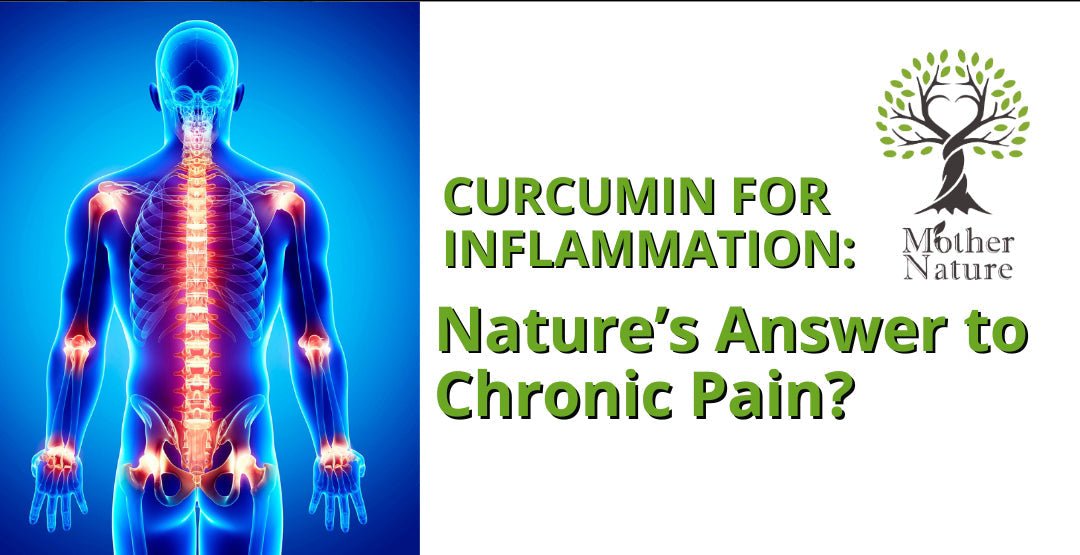Curcumin for Inflammation: Nature’s Answer to Chronic Pain?

Inflammation is a bodily response that can often lead to chronic pain, impacting the quality of life for millions of people worldwide. While pharmaceutical solutions exist, they often come with side effects or diminished efficacy over time. In the search for alternative remedies, curcumin—a compound found in the spice turmeric—has garnered significant attention. But is curcumin truly nature's answer to chronic pain? Let’s dive into the science and possibilities behind this golden substance.
Understanding Inflammation and Chronic Pain
Inflammation serves as a natural defense mechanism to protect the body from harm. However, when it becomes chronic, it can lead to a host of diseases including arthritis, cardiovascular diseases, and even depression. Chronic pain associated with such inflammation can significantly impair daily functioning and well-being.
What is Curcumin?
Curcumin is the active compound in turmeric, a spice widely used in Asian cuisine and traditional medicine systems like Ayurveda and Traditional Chinese Medicine. It gives turmeric its characteristic yellow color and is lauded for its potential therapeutic properties, which include anti-inflammatory, antioxidant, and even anti-cancer effects.
The Science Behind Curcumin’s Anti-Inflammatory Properties
Curcumin’s ability to modulate inflammation is primarily attributed to its capacity to inhibit various molecules that play a role in inflammation. Laboratory studies have shown that curcumin can down-regulate inflammatory cytokines and suppress the activity of enzymes like COX-2, which are involved in the inflammatory process.
Interestingly, curcumin can also inhibit the activation of NF-kB, a protein complex that controls the transcription of DNA and is closely related to the inflammatory response. By blocking these molecular pathways, curcumin may help reduce inflammation at a cellular level.
Efficacy in Managing Chronic Pain
Several clinical trials and studies have explored curcumin’s potential in managing conditions associated with chronic pain. For example, research involving patients with osteoarthritis has shown that curcumin supplementation can reduce joint pain and improve mobility. In some studies, its effects were comparable to those of conventional anti-inflammatory drugs, but without the side effects.
Moreover, curcumin has been investigated for its role in alleviating pain associated with other inflammatory diseases like rheumatoid arthritis, inflammatory bowel disease, and even neural pain disorders. While promising, it should be noted that more large-scale studies are needed to fully understand its benefits across diverse populations.
Enhancing Curcumin’s Bioavailability
One of the main challenges with curcumin is its poor bioavailability; when consumed, it is poorly absorbed in the bloodstream. Advances in formulation have led to various supplements that enhance its absorption, such as combining it with black pepper extract (piperine) or utilizing liposomal formulations.
Safety and Side Effects
Curcumin is generally considered safe and is well-tolerated by most individuals. However, extremely high doses may lead to gastrointestinal discomfort or interact with certain medications. It's important for individuals considering curcumin supplementation to consult with a healthcare provider, especially for those with existing health conditions or medications.
Curcumin’s Place in a Holistic Approach While curcumin shows promise as a natural agent for reducing inflammation and managing chronic pain, it is best considered as part of a holistic approach. This could include dietary modifications, physical therapy, stress reduction techniques, and even other natural supplements, all tailored to the individual’s specific condition and overall health goals
Conclusion
Curcumin presents an intriguing option in the realm of natural treatments for chronic pain. Its potential anti-inflammatory effects offer hope to those seeking alternatives to conventional medications. However, further research and development in improving its bioavailability and understanding its long-term effects will be crucial for fully realizing its potential as nature's answer to chronic pain. As science continues to unlock the secrets of this ancient spice, curcumin may well become an integral part of the modern therapeutic toolkit for managing inflammation.
In recent years, there has been an increasing interest in the use of natural solutions for managing chronic inflammation and chronic diseases. One of the most promising natural compounds in this context is curcumin, a bioactive substance derived from the plant Curcuma longa. Known for its potent anti-inflammatory and antioxidant activities, curcumin has been a focus of numerous studies aimed at understanding its effects on various health conditions and its potential role in daily life.
Curcumin's benefits have been explored in a range of chronic diseases, including autoimmune diseases, metabolic syndrome, and arthritis, where inflammation is a key contributing factor. The treatment of curcumin, particularly in the form of curcumin supplements, has been associated with alleviating symptoms such as joint pain, arthritic pain, and even abdominal pain, commonly encountered in these conditions.
A systematic review of clinical trials highlights the promising effects of curcumin in patients, especially those with knee osteoarthritis, where it has shown to reduce pain and improve joint function. Furthermore, curcumin's anti-inflammatory effects extend to reducing allergic airway inflammation, which impacts conditions like asthma, by modulating the activity of immune cells, such as dendritic cells, and mitigating reactive oxygen species.
The application of curcumin in more challenging conditions, such as advanced pancreatic cancer and neuropathic pain, is also under investigation. Initial studies suggest that curcumin may influence pain management through its interaction with smooth muscle cells and central nervous system pathways, such as the use of intrathecal curcumin for neuropathic pain management.
Despite its potential, a key challenge remains in the bioavailability of curcumin. The compound's absorption is relatively poor, leading researchers to explore various methods to enhance its effectiveness, such as combining it with Black pepper, which contains piperine. Piperine has been shown to increase the absorption of curcumin, thereby enhancing its biological activities and therapeutic effects.
Daily doses of curcumin vary, and determining the optimal dose of curcumin is crucial for maximizing its benefits while minimizing adverse effects. Response curves from trials indicate that while curcumin is generally safe, understanding the safety of curcumin requires careful consideration of individual patient profiles and the potential for adverse effects.
Emerging evidence supports the inclusion of physical activity alongside a curcumin regimen to amplify its benefits, particularly in pain management and reducing inflammation. This holistic approach to pain management underscores the role of lifestyle modifications in augmenting the effects of curcumin in chronic disease management.
As research progresses, the potential of curcumin as an integral component of treatment strategies for chronic inflammation and chronic diseases continues to be promising. Ongoing clinical trials and systematic reviews will further elucidate the comprehensive effects of curcumin, paving the way for its broader application in clinical settings.





